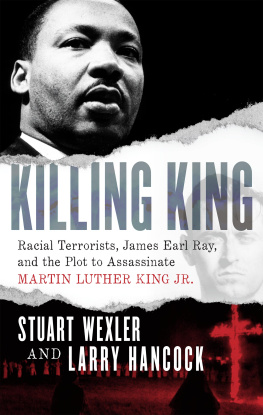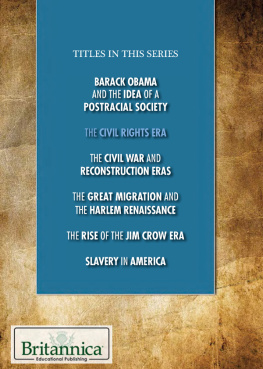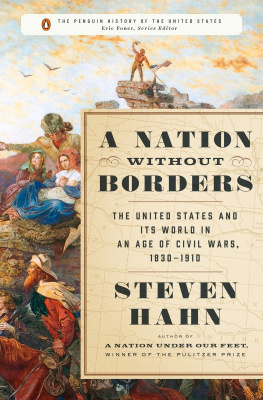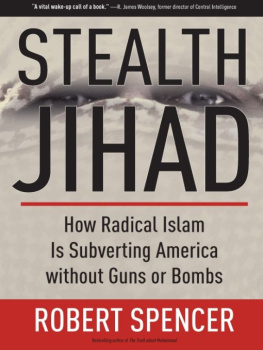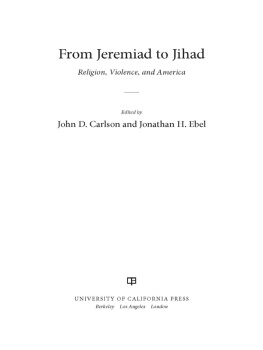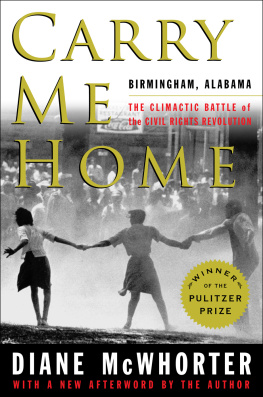
Copyright 2015 by Stuart Wexler
All rights reserved under International and Pan-American Copyright Conventions. No part of this book may be used or reproduced in any manner whatsoever without written permission from the publisher, except in the case of brief quotations embodied in critical articles and reviews.
Library of Congress Cataloging-in-Publication Data
Wexler, Stuart.
Americas secret jihad: the hidden history of religious terrorism in the United States / Stuart Wexler.
pages cm
1. TerrorismReligious aspectsUnited States. 2. ViolenceReligious aspectsUnited States. I. Title.
BL65.T47W49 2015
363.3250973dc23
2015009474
Cover design by Kelly Winton
Interior design by Neuwirth & Associates
COUNTERPOINT
2560 Ninth Street, Suite 318
Berkeley, CA 94710
www.counterpointpress.com
Distributed by Publishers Group West
10 9 8 7 6 5 4 3 2 1
e-book ISBN 978-1-61902-689-6
To my parents.
Everything worthwhile I have ever accomplished should be credited to their love and support.
CONTENTS
A merica is waging a war against religious terrorism, but with an incomplete knowledge and understanding of its own history of domestic, religious terrorism.
But terrorism takes many forms, and is difficult, even for scholars, to define. The one-time radical revolutionary Thomas Jefferson thumbed his nose at the bloodthirsty mobs of France during the Reign of Terror (17931794), but he actively participated in a system of coercion in the southern states that relied upon violence and fear to run its economy; this went beyond the whippings that, daily, sustained the slave-plantation economy, but extended to the threat of torture and killing that maintained the white supremacist social order. If terrorism, as the FBI defines it, involves the unlawful use of force and violence against persons or property to intimidate or coerce a government, the civilian population, or any segment thereof, in furtherance of political or social objectives then the terror that motivated slaves to work, that deterred them from escaping and that cowed them from revolting, certainly meets the criteria (save, perhaps, for the unfortunate fact that it was lawful under state laws). One can easily see the parallels between ante-Bellum pro-slavery violence and the terrorism that the Islamic State of Iraq and Syria (ISIS) uses to impose its will on the Kurds and Yazidis in Northern Iraq.
A more conventional manifestation of terrorism emerged after the Civil War ended the practice of slavery. Many scholars now recognize that the Ku Klux Klan, first formed during Reconstruction as an insurgency against northern military occupation of the south, functioned as a terrorist group. Everything from their aesthetichooded men with torches on horsebackto their actions, from vigilante murders to random beatings, were designed to scare free slaves into reassuming their inferior position within southern society. That the Klan ultimately achieved this objective, with the acquiescence of northern elites, places the Reconstruction-era KKK among the few successful terrorist operations in the history of the modern world, so much so that they all but disappeared by the 1890s. The KKK reemerged in a second wave during World War I, becoming one of the largest fraternal organizations in the nation in the 1920s, reaching even into northern cities where southern blacks increasingly migrated to find work and escape routine violence. Increasingly, the organization directed its venomous hate against the large number of European immigrants who recently settled inside the United States, notably against Jews.
Here the KKK petered out, fragmenting with internal dissent and disputes between leaders, losing its force as Americans focused their attention on the economic calamity of the Great Depression. Never fully gone, the Klan reemerged as a major political force in response to the cultural revolution of the civil rights era (19541968), but failed, this time, to intimidate either African Americans, or the U.S. government, into preserving Jim Crow apartheid. But their failure did not come without a price for America, in the form of some of the most heinous acts of domestic violence in the nations history.
These terrorist crimes, such as the bombing of the Sixteenth Street Baptist Church in Birmingham, Alabama in 1963, or the callous murder of three civil rights workers (popularly known as the Mississippi Burning killings) in 1964, have been well studied and documented by scholars. Less well-known is the development of a new ideological strain, built upon a foundation of Christian theology, that developed between the Klan revival of the 1920s and the reactionary violence that started in the 1950s. Until World War II, Christianity had provided an ad hoc veneer that helped legitimate the Ku Klux Klan in America. But while Christianity could and had been spun by racists to justify the southern caste system and segregation, its core message, of forgiveness and compassion, ran counter to the violence perpetrated by the Klan against blacks. At the same time, a growing number of bigots became attracted to Adolf Hitlers message against Jews; but Southern anti-Semitism, much less a variety of anti-Jewish hatred informed by a foreign enemy responsible for the death of hundreds of thousands of American soldiers, did not gain traction with rank-and-file racists. Christianity did not seem to accommodate a worldview that promoted open violence against Jews and blacks: at least not the kind of Christianity with which most Americans were familiar. But a small subset of scholars, with great care and only modest publicity, have identified and illuminated a strain of theology known as Christian Identity, that provided new justifications for terrorism after World War II.
Built on an idiosyncratic reading of the Book of Genesis that identifies Jews as the spawn of the devil, Christian Identity theologians, starting in the 1940s, spoke to a cosmic conspiracy, one where Jews manipulated sub-human minorities (notably blacks) in a covert war against the true chosen people: white Europeans. Having otherized Jews and blacks accordingly, killing them became not only morally acceptable, but a religious imperative. In fact, this book will demonstrate that the past 60 years of domestic terrorism in the United States is unintelligible outside of the context of Christian Identity theology.
In doing so, this book is revising the history of domestic terrorism in a fundamental way. Those scholars who assign Christian religious motives to acts of domestic terrorism have, to a person, started their narrative no earlier than 1983, with a cell of Identity-influenced terrorists known as The Order. In an otherwise excellent analysis of the types and styles of terrorism inside the United States since 1992, Dr. Arie Perliger, of West Points Combatting Terrorism Center, asserted that the fundamentalist movement (of which Christian Identity was his main focus) was relatively late to develop its violent nature; that this was because, for decades, it lacked an effective nation-wide organizational framework and because it lacked a unifying charismatic pastor. Hence a theology that was fully formed by the late 1950s did not motivate any acts of terrorism until the 1980s, other experts, such as RAND scholar Bruce Hoffman, assert.
These experts are not alone in this kind of assessment. Three scholars who wrote excellent treatments of Christian Identity theology, professors Chester Quarles, Michael Barkun, and Mark Juergensmeyer, offer similar narratives. They are all wrong. A network of religious terrorists did develop cross-affiliations and methods of communication that inspired horrible acts of violence, as early as 1957. This oversight is not a result of the scholars lack of judgment, rather they have lacked access and exposure to sources that offer a very different perspective on major acts violence in American history. These sources, primarily law enforcement reports and documents, many of which are newly released or difficult to obtain, detail the internal thinking and operations of some of Americas most notorious domestic terrorists and the groups that they managed. Law enforcement officers, conversely, failed to recognize the significance of this information in their own files, in part because they were unfamiliar with Christian Identity theology, and in part because they limited their own investigations for fear of exposing sources and methods. With the ability to data-mine these sources, to interview new witnesses, and to synthesize the documents with insights from religious scholars, a new picture emerges. A group of dedicated religious zealots, some well-known to historians, pursued a multi-decade strategy for a frightening goal: an apocalyptic race war inside the United States.
Next page

